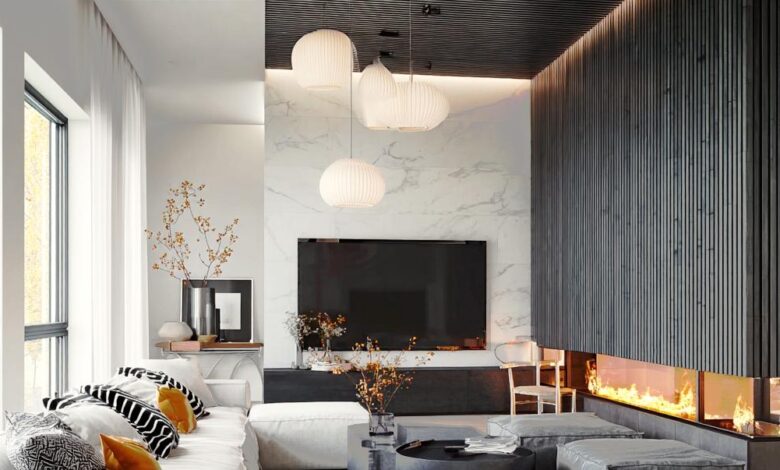
Walk into any modern home today and you’ll notice that the conversation has shifted from furniture layouts and wall colors to devices, apps, and integrations. People don’t just want a living room anymore; they want a living system, an ecosystem that responds, adapts, and anticipates.
We’ve already seen it in the most sci-fi movies ever: the main character sinks into their Edra sofa after an exhausting working day, and with a single voice command, the lights dim, the thermostat adjusts, and a jazz playlist starts humming softly through invisible speakers. What once felt like a luxury reserved for fake scenarios is now an everyday reality for homeowners investing in connected design. How did we get there?
Hands-Free Living: The Rise of Voice-Activated Homes
Traditional switches and knobs are quickly becoming relics. Why walk across the room to flick a light switch when Alexa or Google Home can handle it instantly? Voice-controlled lighting is more than convenience; it’s about redefining interaction. Imagine entering a kitchen with your hands full of groceries and simply saying, “Alexa, lights on”. No fumbling, no balancing bags, just instant response. The same goes for heating systems. Smart thermostats like Nest or Hive don’t just adjust temperatures; they learn your habits. They understand when you’re usually home, when you prefer it cooler at night, and how to optimize energy usage without you lifting a finger. This isn’t tech for tech’s sake; it’s a direct, tangible improvement to how a household functions day to day.
Can Your Home Think for You? Smart Energy Explained
A smart home isn’t just a gadget collection; it’s a design philosophy. The layout of your living room, the choice of furniture, and even the way windows are positioned all play into how technology integrates. For instance, motorized blinds paired with sunlight sensors can cut energy bills by automatically closing when the sun is strongest. That’s design working hand in hand with AI-driven logic. The luxury angle? It’s subtle, not showy. Take climate zoning: being able to heat only the rooms you use is both sustainable and indulgent. Or hidden speakers that disappear into walls and ceilings, transforming a space without clutter. This is the new face of high-end living: less about showy décor, more about spaces designed to make life effortless and as stress-free as possible.
Home Protection Reimagined: Smarter, Not Just Safer
Home security has gone way beyond heavy locks and alarm panels. With smart cameras, sensors, and AI-driven monitoring, you can keep an eye on your home from anywhere in the world. Motion detection linked to lighting systems means potential intruders are greeted with a floodlit yard before they even think about approaching. But here’s the twist: security design is no longer just defensive. It’s proactive, predictive, and connected, though that also means homeowners need to be mindful of digital risks. Systems can alert you if you’ve left a door unlocked, remind you to update a passcode, or even recognize familiar versus unfamiliar faces. Used wisely, these systems protect your home while giving peace of mind.
Will Your Kitchen Be Smarter Than You Think?
Forget kitchens being just “the heart of the home”. In smart houses, they’re the nerve center. Imagine an Italian designer kitchen in this way: smart ovens that preheat via smartphone, refrigerators that remind you when milk is running low, or induction cooktops that sync recipes with cooking times. These aren’t gimmicks anymore. They’re tools that make cooking efficient and, dare I say, fun. Design plays a key role here, too. Appliances aren’t bulky or intrusive; they’re sleek, often built-in, blending effortlessly into cabinetry. A fridge door that doubles as a touchscreen calendar doesn’t just organize your groceries; it organizes your life. This isn’t about luxury being unattainable; it’s luxury making daily routines smoother and smarter.
Entertainment Made Effortless: Welcome to the Smart Home
Hosting guests has always been a design consideration, but now, tech adds a fresh layer. Multi-room audio systems controlled by a simple app let you sync music throughout your house or create different vibes in different rooms. Smart lighting can shift moods at the tap of a button, from dinner-party glow to after-dinner lounge. Seating plays its part too: a sectional piece like the Edra On the Rocks, combined with responsive lighting and sound systems, makes the living room not just a social hub but a fully adaptable experience. The setup flows with the evening, whether you’re hosting a movie night, a casual hangout, or a formal dinner. Even outdoor spaces are catching up. Smart grills, pool heating systems, and landscape lighting extend the concept of home facilities beyond four walls. Imagine a backyard in Yorkshire or Malibu where the pool lights up automatically at sunset while your smart oven keeps track of the steaks; this is entertaining reimagined for the 21st century.
What If Your Home Knew You Better Than You Do?
Here’s the thing: while everyone’s busy installing smart lights and connected thermostats, the real frontier lies in predictive design. We’re on the cusp of homes that not only respond but anticipate spaces that learn enough about your lifestyle to act before you ask. Picture a bedroom that senses your stress levels and adjusts lighting, music, and even scent to calm you before sleep. Or a home office that tunes its environment for productivity based on your calendar load. This is the next wave: homes that don’t just obey but intuit. For architects and designers, it’s no longer about adding gadgets. And for homeowners? It’s about embracing the idea that your house isn’t static. It’s alive, adaptive, and ready to evolve alongside you.




